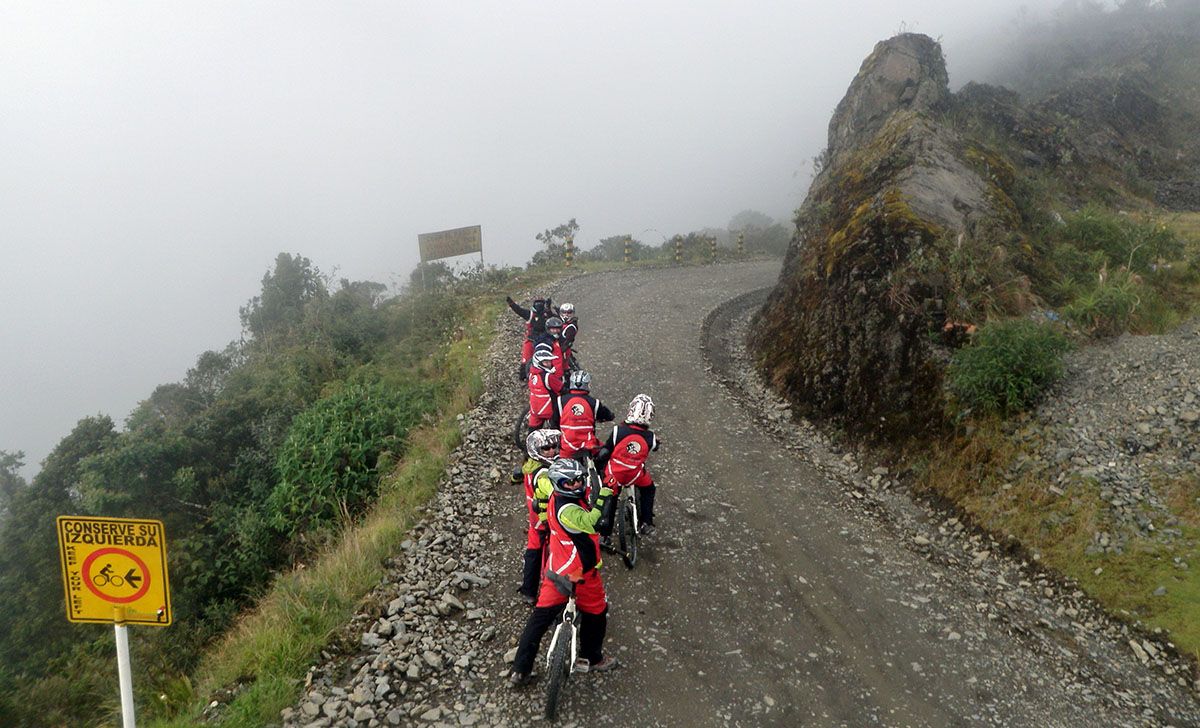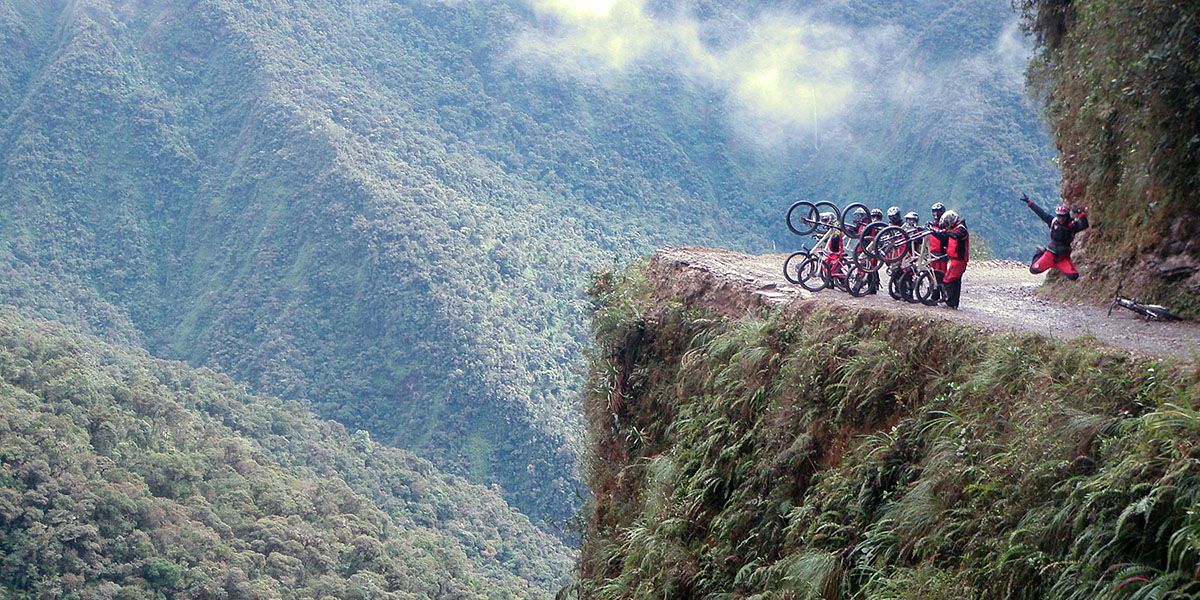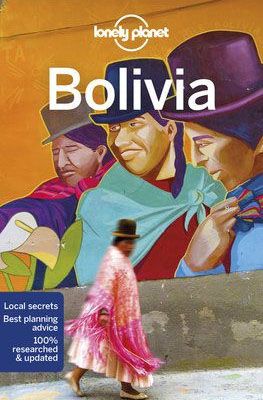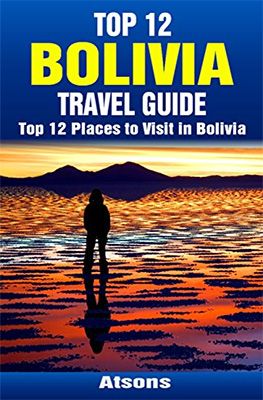The Death Road by mountainbike
From La Paz runs a road to Coroico. This gravel road, in most places slightly wider than 3 metres, descends 3,600 metres of altitude in about 64 kilometres. Next to the road, the deep abyss is flush beside you. There is almost no crash barriers or other protection anywhere. This used to be a busy connecting road where trucks and buses had to pass each other. That often went ok but also very often horribly wrong. The worst accident in 1983 cost the lives of more than 100 people when a bus crashed hundreds of metres into the ravine. The road was therefore called “The world’s most dangerous road”, or in short, the “death road”. That sounds very attractive to go mountain biking, doesn’t it?
Descending the Death Road
Fortunately, the road has been closed to traffic for a number of years, except for cyclists, accompanying cars and some tourist buses. Yet with the descent of cyclists, accidents also happen. This is partly due to one’s own overconfidence or experience (wanting to go too fast or braking the wrong way in a sharp bend, not enough experience with descents), partly due to the material (no good brakes, steering wheel that breaks off) and partly due to the accompanying organisation (no ban on overtaking the front guide, or no guide at all).
It is therefore extremely important that you select a very reliable organisation for your adventure. Don’t be tempted to choose the cheapest provider as that operator is guaranteed to cut back on the material or guides. Here you really have to be sure that everything is perfectly in order! On TripAdvisor, you will see many reviews about all the organisations offering this trip. Choose one that is recommended by everyone with very positive reviews!

Unforgettable experience
We did not do this tour in 2017. We regret that afterwards. Some friends of ours, a bit older than ourselves, dared to do it a few years ago and found it an unforgettable experience. You have beautiful views, you go past beautiful waterfalls and of course, you have the adrenaline kick of the descent. After arrival at the final destination, they could have a nice shower, there was a delicious lunch prepared and there was an opportunity to relax.
They booked the tour with Lunatours, but this organisation doesn’t seem to exist anymore. As for the guide and the bikes, they had nothing but praise. The descent was not scary at all, also thanks to the good guide. They did see other groups where the guide was not so strict with safety and participants descended like “kamikaze riders”. An average Dutchman can cycle pretty well, so the risks are certainly limited. Gravity Bolivia is also very well known for its expertise and safety.

Practical tips
Finally, a few practical tips:
- Check the organisation thoroughly where you want to book, go for quality, expertise and not the lowest price.
- Ask others who did the Death Road how satisfied they were with the tour operator, guides and equipment. Also read reviews on TripAdvisor.
- Check that at least one guide is cycling in front of and behind the group, and that they make sure that no participant is allowed to overtake the front guide. Check too if the guides explain the surroundings, as the aim is also to enjoy the views.
- If you suspect a problem with your mountain bike’s brakes, ask for another bike. Check your bike thoroughly before you start and report any problem to the organisation immediately.
- Bring layers of clothing and zip-off trousers. You start at high altitude early in the morning and it is very cold then. Towards the end of the trip it is hot and humid.
- It is dusty and sometimes wet. Bring clothes that you don’t mind getting dirty.
- At the official start of the Death Road, you have to pay an entrance fee of 50 Bolivianos. Make sure you have this money with you in cash.


